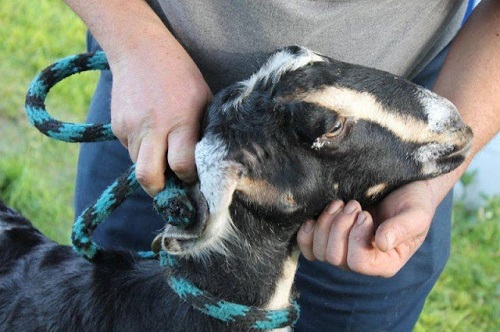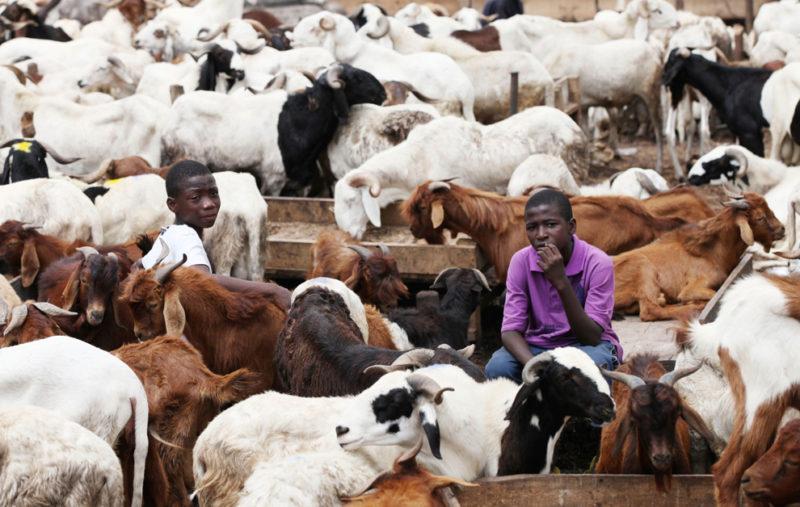Caseous Lymphadenitis is a chronic, highly contagious bacterial disease with no cure that affects sheep and goats. The disease is caused by the bacterium Corynebacterium pseudotuberculosis. Goats catch the disease from being around other infected goats, and it passes easily through wounds, cuts or the mucous membranes around the eyes, ears, nose or mouth. Female goats can pass the infection to nursing kids and breeding bucks and does can spread the disease as well.
Since Caseous Lymphadenitis has the potential to be contagious to humans, care should be taken when handling infected animals that have draining abscesses. Other livestock and animals can catch variations of the disease as well, so culling the animals might prove to be the best way to control the disease. There are those, however, who try to manage Caseous Lymphadenitis infected herds when trying to preserve certain bloodlines.
Caseous Lymphadenitis in meat goat herds can prove to be detrimental since the abscesses can render a carcass useless when processed for meat. Although Caseous Lymphadenitis isn’t often identified until abscesses are seen by the owner or handler, the goat may already have had abscesses forming internally throughout the body for months or years. Often they don’t know the infection exists until they have a goat that is chronically skinny and forms random abscesses.
Also Read: Listeriosis in Goats and Cattle
Signs of Caseous Lymphadenitis
The most common sign of Caseous Lymphadenitis in goats is the formation of abscesses at the jawline or under the ear that rupture and ooze a white toothpaste-type of substance. Caseous Lymphadenitis lives within the body and likes to live in lymph nodes so just about any lymph node on the body (internally and near the surface) may show enlargement and signs of infection.
A Caseous Lymphadenitis infected goat might have one abscess rupture, and then may be fine and not show signs of the disease until several months later. Some goats with the disease may never show outward signs but may have abscesses within the lungs and could be spreading the disease through the air to potentially healthy goats in the herd. Still, other infected goats may show several of the obvious signs that immediately alert the owner that there is a problem are:
- Abscesses on the head or neck
- Abscesses on the chest, flank or rear legs
- Sudden weight loss
- Unthriftiness or dullness
- Muscle loss and ribby appearance
- Oozing white substance through the skin
Control of Caseous Lymphadenitis in Goats
Caseous Lymphadenitis infected goats can be difficult to manage and since the disease can be transmitted so quickly, the infected animals are often culled or destroyed to prevent it from being spread throughout a herd. Since adult female goats can infect their healthy offspring, goat kids must be separated from their mother at birth and bottle-fed. Extreme sanitary measures must be taken to make sure the infected goats don’t transmit the disease to the healthy goats.
Since the chances of transmission are higher when a ruptured abscess is present, these goats will have to be isolated so that they can’t infect others by sharing feeders, water buckets, rubbing or butting heads, or sharing bedding. Since Caseous Lymphadenitis has the potential to live in the soil even in extreme climates, the area where infected animals are kept should always be off limits to other healthy livestock, children and pets.
Also Read: Hoof Rot in Goats: Causes, Treatment and Prevention
Treatment of Caseous Lymphadenitis in Goats
Some vaccines are currently being developed and tried on goats and sheep, however, none have been proven to be truly effective at totally preventing Caseous Lymphadenitis. The vaccine only helps to reduce the incidence and severity of the disease. At this time, the best way to avoid loss in a goat herd is to cull affected animals immediately, and to take extreme caution when selecting new animals from other breeders and farms. Infected animals do not thrive and are expensive and time-consuming to keep and feed.
Since there is no cure for Caseous Lymphadenitis, some goat owners try to preserve certain bloodlines by maintaining their registered goats that have the disease. When an abscess ruptures, it can be drained and cleaned. Although this technique isn’t foolproof, it can help limit the spread of the disease to other goats and the environment in which they live.
The only treatment for Caseous Lymphadenitis is its prevention—there is no cure. Owners should select new animals very carefully, and any abrasions, old scars or other obvious wounds should be questioned before the purchase of the animal. Diagnosis of Caseous Lymphadenitis can be performed with the help of a veterinarian. Any signs of Caseous Lymphadenitis within a herd should be addressed immediately and if the owner does not wish to go to extreme measures to maintain the animals, they should be culled.



